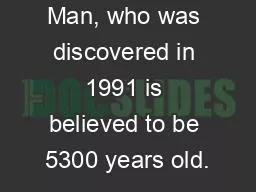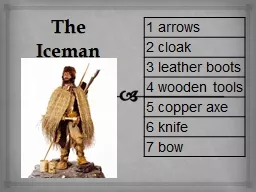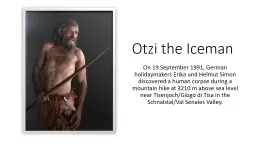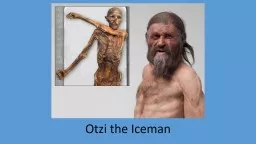PPT-Otzi the Ice Man, who was discovered in 1991 is believed to be 5300 years old.
Author : genesantander | Published Date : 2020-07-04
Assuming he was in fact 5300 years old in 1991 in what year was he born What was the date 2000 years before you were born 4000 BCE 5000 BCE 2000 BCE 0 3000 BCE
Presentation Embed Code
Download Presentation
Download Presentation The PPT/PDF document "Otzi the Ice Man, who was discovered in..." is the property of its rightful owner. Permission is granted to download and print the materials on this website for personal, non-commercial use only, and to display it on your personal computer provided you do not modify the materials and that you retain all copyright notices contained in the materials. By downloading content from our website, you accept the terms of this agreement.
Otzi the Ice Man, who was discovered in 1991 is believed to be 5300 years old.: Transcript
Download Rules Of Document
"Otzi the Ice Man, who was discovered in 1991 is believed to be 5300 years old."The content belongs to its owner. You may download and print it for personal use, without modification, and keep all copyright notices. By downloading, you agree to these terms.
Related Documents














